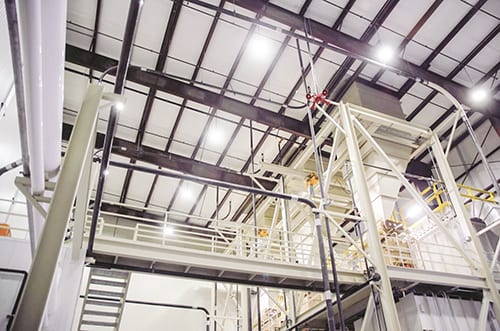 In today’s competitive manufacturing and industrial world, smart lighting control systems are playing a key role in helping facilities control costs, increase productivity and enhance worker well-being.
In today’s competitive manufacturing and industrial world, smart lighting control systems are playing a key role in helping facilities control costs, increase productivity and enhance worker well-being.
These systems help operators regulate the level and quality of light for spaces and tasks that are crucial to business success, which is why a properly designed and executed upgrade is a good investment.
9 reasons to invest in smart lighting control systems
- Experience centralized lighting control. Smart lighting control systems allow managers to easily gain facility control from one convenient access point.
- Maximize energy savings. In many cases, energy costs are rising, and a significant part of that cost is lighting. Smart lighting control systems help reduce consumption and energy waste by optimizing controls. Set schedules so lights aren’t burning unnecessarily, utilize sensors to turn lights off when people leave a work area and program fixtures to work with natural lighting.
- Integrate with existing lighting systems. High-quality control systems are easy to add, requiring very little new wiring. Additionally, integrated lighting control systems can usually be operated via smartphones, tablets or computers. It may even be possible to integrate security, HVAC and other building management aspects into smart lighting control systems.
- Access automation for greater efficiency. Networked controls and software allow facilities to automatically configure individual fixtures and entire zones to boost savings and increase luminaire life. Automated controls can dim and turn lights on and off based on time of day, available daylight, occupancy, load shedding events and more.
- Capitalize on lighting data. Smart lighting control systems can help facility managers gain insight into user preferences in multiple applications.
- Increase worker productivity, happiness and safety. In many cases, these are the results of improving a lighting environment. By setting the right light levels for each workspace at each hour of the day, employees are more comfortable and experience less eye strain.
- Conduct limited maintenance in house. Many smart lighting control systems have monitoring capabilities that alert users of any issues via email, text or similar methods. Additionally, many can produce daily reports of equipment requiring servicing or replacement, making maintenance operations more responsive and efficient, particularly in complex applications.
- Go further with LED. Smart lighting control systems can help add to the life of LED installments, resulting in significant return on investment (ROI).
- Meet energy codes more easily. By consulting with the right distributor on smart lighting control systems, facilities can seamlessly meet the latest federal and state code requirements.
For questions regarding smart lighting control systems, contact a Border States Account Manager.
Related posts
Boost manufacturing efficiency | 5 ways to increase productivity, profit
Manufacturing labor shortage | Attract talent, close skills gap for the future